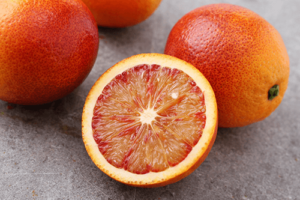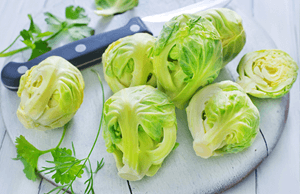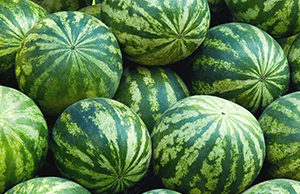Vitamin C is one of the essential vitamins that play big roles in your health.
Health is wealth. Many people don’t realize the importance of staying healthy.
In fact, most of them don’t know what to do to keep healthy. However, if you’re one of those who are health conscious, most likely you’ll want to know the top 15 foods having high Vitamin C content.

Why Vitamin C Matters
Before diving into the best food sources, let’s quickly understand why vitamin C is so essential. Adults need about 75 mg (women) to 90 mg (men) daily, with a safe upper limit of 2,000 mg to prevent side effects like diarrhea or nausea. Our bodies can’t produce vitamin C, so getting it from our diet is essential for:
- Immune Function: It’s a superstar at enhancing white blood cell activity, helping your body fight off infections (1).
- Skin Health: Supporting collagen synthesis for firmer, more youthful skin. You can consider trying a vitamin C serum that supports beautiful skin.
- Antioxidant Protection: It’s a guardian against harmful free radicals, which helps lower your risk of chronic diseases.
- Wound Healing: From minor cuts to more significant healing, vitamin C helps speed up tissue repair.
Ready to supercharge your intake? Here are the top 15 foods to help you do just that.
1. Strawberries (58.8 mg per 100g)

Strawberries are considered one of the healthiest and tastiest berries. A cup of strawberries provides 98 mg, exceeding the RDA.
These juicy berries are delicious in desserts, smoothies, or as a snack. They’re also low in calories and high in fiber.
Eating strawberries can reduce bad cholesterol levels and oxidative stress.
Nutrition Facts:
Amount Per 1 medium (1-1/4″ dia) (12 g)”>1 medium (1-1/4″ dia) (12 g)
- Vitamin C: 7.1 mg
- Cholesterol: 0 mg
- Sodium: 0 mg
- Potassium: 18 mg
2. Citrus fruits (30–70 mg per 100g)

Citrus fruits, including oranges, lemons, limes, and grapefruits, are classic vitamin C sources.
A medium orange provides about 70 mg, a lemon 31 mg, and a grapefruit around 39 mg per half. Enjoy the fresh, juiced, or in salads for a zesty, immune-boosting kick.
Nutrition Facts:
- Vitamin C: 33.4 mg
- Cholesterol: 0 mg
- Sodium: 1.1 mg
- Potassium: 138 mg
3. Papayas (60.9 mg per 100g)

One serving of papaya provides 100% of your daily requirements of Vitamin C. You can mix papayas to yogurt or smoothie. Aside from Vitamin C, it also has vitamin A.
Nutrition Facts:
1 fruit, large (781 g)
- Vitamin C: 475.6 mg
- Cholesterol: 0 mg
- Sodium: 62 mg
- Potassium: 1421 mg
4. Kiwi

This fruit originated from New Zealand and it contains more Vitamin C as compared to an orange. Kiwi is also high in potassium as a banana and flavonoids as well.
Since it is packed with vitamin C, it works well in making your respiratory tract stronger.
Nutrition Facts:
1 Cup, sliced (180 g)
- Vitamin C: 166.9 mg
- Cholesterol: 0 mg
- Sodium: 5 mg
- Potassium: 562 mg
5. Black Currant

Each serving of black currant contains 180mg of vitamin C. This dark purple-colored fruit is also rich in vitamin B5, iron, potassium and phytochemicals.
Nutrition Facts:
1 Cup (112g) of raw currants.
- Calories: 63
- Fat: 0.22g
- Sodium: 1.1mg
- Carbohydrates: 15.5g
- Fiber: 4.8g
- Sugars: 8.25g
- Protein: 1.6g
- Vitamin C: 46mg
6. Guava (228.3 mg per 100g)

One medium guava provides about 126 mg of vitamin C, doubling your daily needs.
Sweet and juicy, guavas are perfect for snacking, smoothies, or salads.
This exotic fruit is also rich in folic acid, manganese, potassium and dietary fiber.
Guavas are deemed to be superfoods that should be included in your diet. You can find guava at your local supermarkets. Try growing guavas in your backyard.
Nutrition Facts:
1 Cup (100g) of raw guavas.
- Calories: 68
- Sodium: 2 mg
- Potassium: 417 mg
- Total Carbohydrate:14 g
- Protein 2.6 g
- Vitamin A: 12%
- Vitamin C:380%
7. Acerola Cherry

Acerola cherry is a small red fruit that contains a high amount of vitamin C. It holds approximately 65 times of vitamin C than an orange.
It is best to consume raw and fresh acerola cherries when they are in season. However, you can also find acerola cherry in powder form.
Nutrition Facts:
100g of Raw Acerola Cherry
- Vitamin C: ~1600-1700 mg
- Vitamin A (as beta-carotene): ~38 µg RAE (Good source for a fruit)
- Folate (Vitamin B9): ~14 µg
- Magnesium: ~18 mg
- Calcium: ~12 mg
- Potassium: ~146 mg
8. Bell Peppers (80.4 – 152 mg per 100g)

Bell peppers are not only high in Vitamin C but also in beta carotene.
Studies revealed that these colorful veggies support cardio-protective health.
A medium red bell pepper offers around 152 mg of vitamin C, outshining many fruits. While less potent than red, green bell peppers still deliver about 96 mg per medium pepper.
They also prevent blood clot formation, cataracts and reduce the risks of strokes and heart attacks. They’re budget-friendly and great for cooking or eating raw.
9. Brussels sprouts

Brussels sprouts are not everyone’s favorite. But, a serving of Brussels sprouts offers about 50mg of vitamin C.
It is also high in vitamin A, vitamin K, folate, potassium, manganese and dietary fiber. That’s why it’s important to serve this food to your family particularly your children.
10. Melons

Watermelon is one of the variants of melons that are a great source of vitamin C.
Each serving provides about 112% of your vitamin C daily needs. Likewise, melons are also rich in potassium and Vitamin A.
11. Amalaki fruit

It is an exotic fruit that originated from India. It’s also considered as a superfood as is also used in formulating Ayurvedic pharmacopeia.
After picking the Amalaki fruit you should be dried to enjoy its health-boosting properties. It has a higher concentration of vitamin C. That’s why it used for boosting the immune system.
12. Cauliflower (48.2 mg per 100g)

This vegetable contains about 46mg of Vitamin C and other essential nutrients. Cauliflower also contains Vitamin K, dietary fiber and folate.
Tomatoes

Tomatoes are not only rich in lycopene but also in Vitamin C. Sun-dried tomatoes have a higher
concentration of this essential nutrient.
100 grams of tomatoes hold more than 100 mg of vitamin C. It suffices about 170
14. Broccoli (89.2 mg per 100g)

A cup of cooked broccoli provides 81 mg of vitamin C, nearly meeting the RDA.
Broccoli can be eaten cooked or raw. Steam it lightly to preserve nutrients and enjoy it in soups, stir-fries, or as a side dish.
Aside from vitamin C, this vegetable also contains dietary fiber and is considered the best detox food.
Nutrition Facts:
1 Cup (100g) of raw Broccoli
- Calories: 34 kcal
- Protein: 2.8 g
- Sodium: 33 mg
- Potassium: 316 mg
- Vitamin C: 89 mg
- Vitamin K: 102
- Vitamin A (as beta-carotene): 31 µg RAE (623 IU)
- Folate (Vitamin B9): 63 µg
- Vitamin B6: 0.18 mg
- Vitamin B5 (Pantothenic Acid): 0.57 mg
15. Dark leafy greens

Dark leafy greens are a great source of Vitamin C that’s why it’s essential to your diet. This food group includes mustard greens, kale, turnip greens, spinach, chard and watercress.
They also provide other essential nutrients and kale is the best choice.
A Word of Caution
While vitamin C is safe for most, excessive intake (above 2,000 mg daily) may cause digestive discomfort. Individuals with kidney issues or a history of kidney stones should consult a healthcare provider before significantly increasing their vitamin C intake.
Conclusion
Incorporating these 15 vitamin C-rich foods into your diet is a delicious and natural way to support your immune system, skin, and overall health. From exotic kakadu plums to everyday citrus fruits, there’s a vitamin C source for every palate and budget. Aim for variety, keep it fresh, and let these nutrient-packed foods help you thrive.
Note: Vitamin C values are approximate and sourced from USDA food composition databases and nutritional research. Always consult a healthcare professional for personalized dietary advice.






Add comment